Book Images
All the images in our books are published under creative commons, and thus feel free to use them in your own presentations or material.
Currently we have these book images available:
- Large-Scale Scrum - More with LeSS
- Practices for Scaling Lean and Agile Development
- Scaling Lean and Agile Development
Book images from Large-Scale Scrum: More with LeSS
The following images are from Large-Scale Scrum: More with LeSS - Craig Larman, Bas Vodde:
Chapter 2
 LeSS Complete Picture
LeSS Complete Picture LeSS Principles
LeSS Principles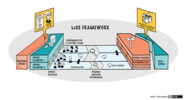 LeSS Framework
LeSS Framework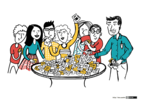 Sprint Planning One - Story Sketch
Sprint Planning One - Story Sketch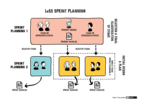 Sprint Planning
Sprint Planning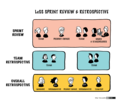 Sprint Review & Retrospective
Sprint Review & Retrospective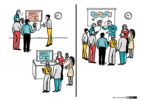 Sprint Review Bazaar - Story Sketch
Sprint Review Bazaar - Story Sketch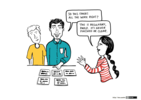 Product Managers Discuss - Story Sketch
Product Managers Discuss - Story Sketch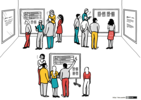 Multi-Team Product Backlog Refinement - Story Sketch
Multi-Team Product Backlog Refinement - Story Sketch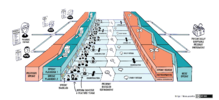 LeSS Huge Framework
LeSS Huge Framework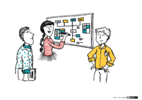 Splitting at the Whiteboard - Story Sketch
Splitting at the Whiteboard - Story Sketch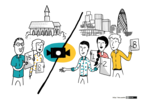 Multi-site estimation with Planning Poker - Story Sketch
Multi-site estimation with Planning Poker - Story Sketch
Chapter 3
 LeSS Volunteers
LeSS Volunteers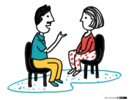 Coaching
Coaching
Chapter 4
 Organizing by Customer Value
Organizing by Customer Value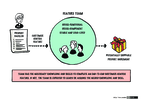 Figure 4.1 - Feature Team
Figure 4.1 - Feature Team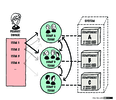 Figure 4.2 - Component Teams Model
Figure 4.2 - Component Teams Model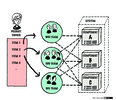 Figure 4.3 - Feature Teams Model
Figure 4.3 - Feature Teams Model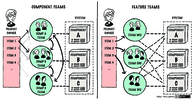 Figure 4.4 - Component vs Feature Teams
Figure 4.4 - Component vs Feature Teams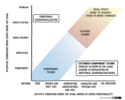 Figure 4.5 - Feature Team Adoption Map
Figure 4.5 - Feature Team Adoption Map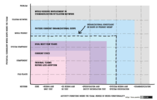 Figure 4.6 - Feature Team Adoption Map - Example Telecom
Figure 4.6 - Feature Team Adoption Map - Example Telecom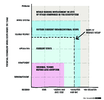 Figure 4.7 - Feature Team Adoption Map - Example Finance
Figure 4.7 - Feature Team Adoption Map - Example Finance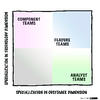 Figure 4.8 - Two Dimensions of Specialization
Figure 4.8 - Two Dimensions of Specialization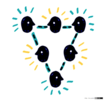 People Structure
People Structure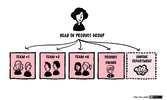 Figure 4.9 - Typical LeSS Organizational Chart
Figure 4.9 - Typical LeSS Organizational Chart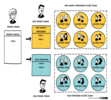 Figure 4.10 - Requirement Areas
Figure 4.10 - Requirement Areas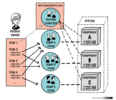 Figure 4.11 - Grow a Parallel Organization
Figure 4.11 - Grow a Parallel Organization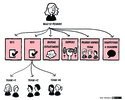 Figure 4.12 - Typical LeSS Huge Organizational Structure
Figure 4.12 - Typical LeSS Huge Organizational Structure
Chapter 5
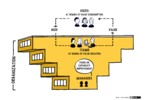 Figure 5.1 - LeSS Organization
Figure 5.1 - LeSS Organization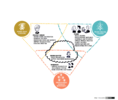 Figure 5.2 - Responsibilities of the LeSS Roles
Figure 5.2 - Responsibilities of the LeSS Roles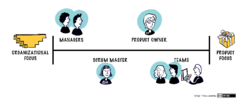 Figure 5.3 - Product and Organizational Focus of the Roles
Figure 5.3 - Product and Organizational Focus of the Roles
Chapter 6
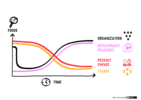 Figure 6.1 - Scrum Master Focus Over Time
Figure 6.1 - Scrum Master Focus Over Time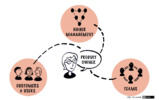 Figure 6.2 - Product Owner Relationships
Figure 6.2 - Product Owner Relationships Figure 6.3 - Product and Organizational Focus of the Roles
Figure 6.3 - Product and Organizational Focus of the Roles
Chapter 8
 Figure 8.1 - Types of Development and the Product Owner Location
Figure 8.1 - Types of Development and the Product Owner Location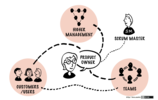 Figure 8.2 - Product Owner Relationships
Figure 8.2 - Product Owner Relationships
Chapter 9
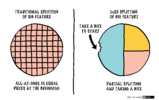 Figure 9.1 - Partial Splitting and Taking a Bite
Figure 9.1 - Partial Splitting and Taking a Bite Figure 9.3 - New Area with Only One Item
Figure 9.3 - New Area with Only One Item Figure 9.4 - Backlog Refinement before Joining New Area
Figure 9.4 - Backlog Refinement before Joining New Area Figure 9.5 - Building the Bite while Refining New Items
Figure 9.5 - Building the Bite while Refining New Items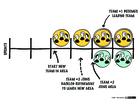 Figure 9.6 - Adding New Teams and Having a Leading Team
Figure 9.6 - Adding New Teams and Having a Leading Team
Chapter 10
 Figure 10.1 - Definition of Done
Figure 10.1 - Definition of Done Figure 10.2 - Growing a One Sprint of Undone Work
Figure 10.2 - Growing a One Sprint of Undone Work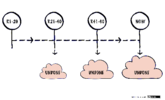 Figure 10.3 - Piling up Three Sprints of Undone Work
Figure 10.3 - Piling up Three Sprints of Undone Work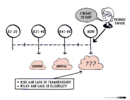 Figure 10.4 - Undone Work Causing Risk and Delay
Figure 10.4 - Undone Work Causing Risk and Delay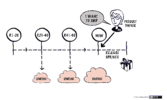 Figure 10.5 - Bad Idea: Doing Undone Work using Release Sprint
Figure 10.5 - Bad Idea: Doing Undone Work using Release Sprint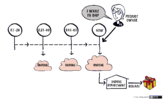 Figure 10.6 - Bad Idea: Doing Undone Work using Undone Department
Figure 10.6 - Bad Idea: Doing Undone Work using Undone Department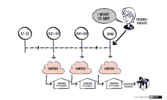 Figure 10.7 - Bad Idea: Doing Undone Work using Pipelining
Figure 10.7 - Bad Idea: Doing Undone Work using Pipelining
Chapter 11
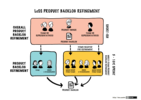 Figure 11.1 - Product Backlog Refinement
Figure 11.1 - Product Backlog Refinement
Chapter 12
 Sprint Planning
Sprint Planning
Chapter 13
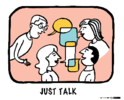 Just Talk
Just Talk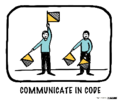 Communicate in Code
Communicate in Code Communities
Communities Cross Team Meetings
Cross Team Meetings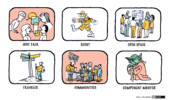 Component Mentors
Component Mentors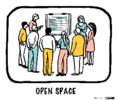 Open Space
Open Space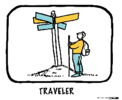 Travelers
Travelers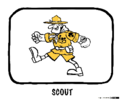 Scouts
Scouts Mix and Match
Mix and Match
Chapter 14
 Sprint Review and Retrospective
Sprint Review and Retrospective
Book images from Practices for Scaling Lean and Agile Development
The following images are from Practices for Scaling Lean and Agile Development - Craig Larman, Bas Vodde:
Book Cover
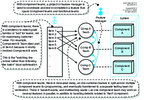 Component Teams
Component Teams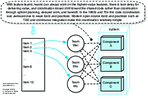 Feature Teams
Feature Teams
Chapter 2
 Figure 2.1: Large-Scale Scrum, Framework-1 (LeSS)
Figure 2.1: Large-Scale Scrum, Framework-1 (LeSS) Figure 2.1: Large-Scale Scrum, Framework-2 (LeSS Huge)
Figure 2.1: Large-Scale Scrum, Framework-2 (LeSS Huge)
Chapter 3
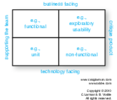 Figure 3.1: Marick’s Test Categories
Figure 3.1: Marick’s Test Categories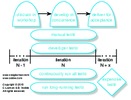 Figure 3.2: Testing Activities in an Iteration
Figure 3.2: Testing Activities in an Iteration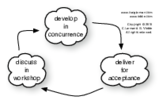 Figure 3.3: A-TDD Overview
Figure 3.3: A-TDD Overview Figure 3.4: A-TDD in More Detail
Figure 3.4: A-TDD in More Detail Figure 3.5: Conventional Document-centric Style of Requirements Clarification
Figure 3.5: Conventional Document-centric Style of Requirements Clarification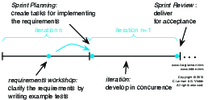 Figure 3.6: A-TDD Steps Mapped to Scrum Iteration
Figure 3.6: A-TDD Steps Mapped to Scrum Iteration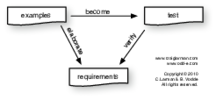 Figure 3.7: Relationship Between Examples, Tests, and Requirements
Figure 3.7: Relationship Between Examples, Tests, and Requirements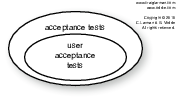 Figure 3.9: UAT is a Subset of Acceptance Tests
Figure 3.9: UAT is a Subset of Acceptance Tests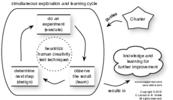 Figure 3.10: Overview of Exploratory Testing
Figure 3.10: Overview of Exploratory Testing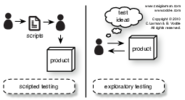 Figure 3.11: Difference Between Scripted And Exploratory Testing
Figure 3.11: Difference Between Scripted And Exploratory Testing Figure 3.17: Robot Framework Architecture
Figure 3.17: Robot Framework Architecture
Chapter 4
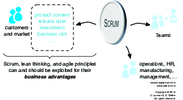 Figure 4.1: Business-Facing Change-Opportunities when Adopting Scrum
Figure 4.1: Business-Facing Change-Opportunities when Adopting Scrum Figure 4.2: Scrum May Contribute To Business Objectives
Figure 4.2: Scrum May Contribute To Business Objectives Contract Game Figure 1
Contract Game Figure 1 Contract Game Figure 2
Contract Game Figure 2 Contract Game Figure 3
Contract Game Figure 3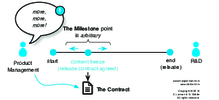 Contract Game Figure 4
Contract Game Figure 4 Contract Game Figure 5
Contract Game Figure 5 Contract Game Figure 6
Contract Game Figure 6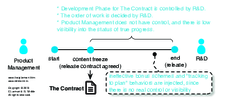 Contract Game Figure 7
Contract Game Figure 7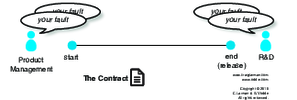 Contract Game Figure 8
Contract Game Figure 8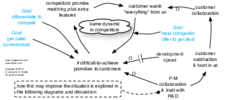 Feature War Causal Loop
Feature War Causal Loop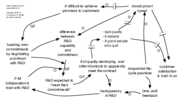 Contracts in R&D Causal Loop
Contracts in R&D Causal Loop Lack of Product Management Collaboration Causal Loop
Lack of Product Management Collaboration Causal Loop Total Picture Product Management Causal Loop
Total Picture Product Management Causal Loop Figure 4.4: Take On A Common Goal Rather Than Create a Platform Group
Figure 4.4: Take On A Common Goal Rather Than Create a Platform Group Product Management - Product Owner Venn Diagram
Product Management - Product Owner Venn Diagram
Chapter 5
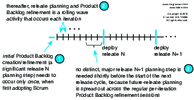 Figure 5.1: Initial Product Backlog Creation Happen Once
Figure 5.1: Initial Product Backlog Creation Happen Once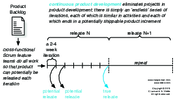 Figure 5.2: Continuous Product Development
Figure 5.2: Continuous Product Development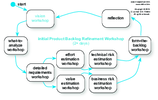 Figure 5.3: Sample Activities In Kickoff Workshops
Figure 5.3: Sample Activities In Kickoff Workshops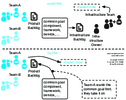 Figure 5.7: Feature Teams and not Seperate Infrastructure Groups
Figure 5.7: Feature Teams and not Seperate Infrastructure Groups Figure 5.8: Undone Work Grows Over Time
Figure 5.8: Undone Work Grows Over Time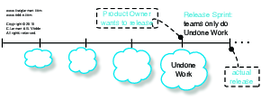 Figure 5.9: Release Sprint
Figure 5.9: Release Sprint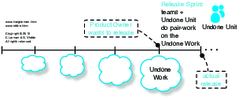 Figure 5.10: Teams Do a Release Sprint with the Undone Unit
Figure 5.10: Teams Do a Release Sprint with the Undone Unit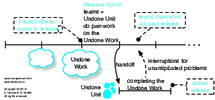 Figure 5.11: Undone Unit After One Release Sprint
Figure 5.11: Undone Unit After One Release Sprint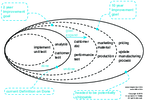 Figure 5.12: Expand Done Over Time
Figure 5.12: Expand Done Over Time
Chapter 6
 Figure 6.1: Role for Coordinator Between Departments
Figure 6.1: Role for Coordinator Between Departments Figure 6.2: Full Cross-Functional Integration
Figure 6.2: Full Cross-Functional Integration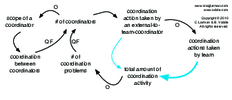 Figure 6.3: Effect of Team-External Coordinator Role
Figure 6.3: Effect of Team-External Coordinator Role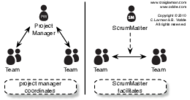 Figure 6.4: One Difference Between Project Manager and Scrum Master Role
Figure 6.4: One Difference Between Project Manager and Scrum Master Role
Chapter 7
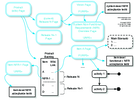 Figure 7.1: Artifacts
Figure 7.1: Artifacts Figure 7.2: Avoid Seperate Analysis Groups and Fake Team Members that Hand Off Requirements
Figure 7.2: Avoid Seperate Analysis Groups and Fake Team Members that Hand Off Requirements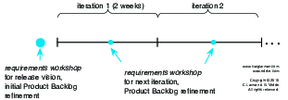 Figure 7.3: Timing of Requirement Workshops
Figure 7.3: Timing of Requirement Workshops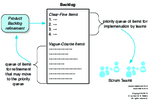 Figure 7.5: Refine the Backlog Incrementally
Figure 7.5: Refine the Backlog Incrementally Experiment with Many Analysis Techniques 1
Experiment with Many Analysis Techniques 1 Experiment with Many Analysis Techniques 2
Experiment with Many Analysis Techniques 2
Chapter 8
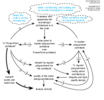 Figure 8.1: Architecture Metaphore Causal Loop
Figure 8.1: Architecture Metaphore Causal Loop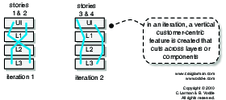 Figure 8.8: Incrementally add Features Across Layers
Figure 8.8: Incrementally add Features Across Layers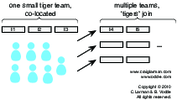 Figure 8.9: Start Programming a New Product with one Tiger Team
Figure 8.9: Start Programming a New Product with one Tiger Team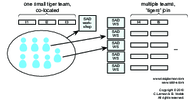 Figure 8.10: A Time To Get SAD
Figure 8.10: A Time To Get SAD
Chapter 9
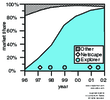 Figure 9.1: Browser Market Share and Releases
Figure 9.1: Browser Market Share and Releases Figure 9.2: Dynamics of Unrealistic Deadline
Figure 9.2: Dynamics of Unrealistic Deadline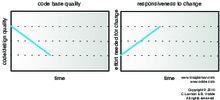 Figure 9.3: Code Quality Decreases Over Time
Figure 9.3: Code Quality Decreases Over Time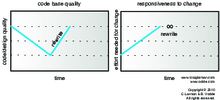 Figure 9.4: Rewite Increases Code Quality
Figure 9.4: Rewite Increases Code Quality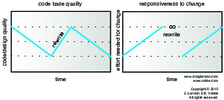 Figure 9.5: Code Base Quality Degrades Again After The Rewrite
Figure 9.5: Code Base Quality Degrades Again After The Rewrite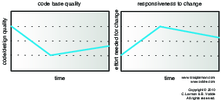 Figure 9.6: Growing the Code Healthfully
Figure 9.6: Growing the Code Healthfully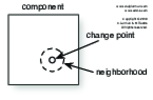 Figure 9.7: Clean Up Your Neighborhood
Figure 9.7: Clean Up Your Neighborhood
Chapter 10
 Figure 10.1: Growing versus Building
Figure 10.1: Growing versus Building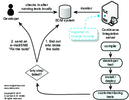 Figure 10.2: CI System
Figure 10.2: CI System Figure 10.3: The Dynamics of Broken Builds
Figure 10.3: The Dynamics of Broken Builds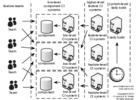 Figure 10.4: Scaled CI System
Figure 10.4: Scaled CI System
Chapter 11
 Figure 11.1: Gradual Transition from Component to Feature Teams
Figure 11.1: Gradual Transition from Component to Feature Teams Joint Retrospective
Joint Retrospective
Chapter 12
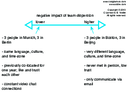 Figure 12.1: Varying Impacts of Team Dispersion
Figure 12.1: Varying Impacts of Team Dispersion
Chapter 13
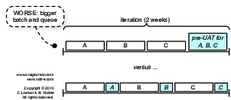 Figure 13.11: pre-UAT After Each Feature
Figure 13.11: pre-UAT After Each Feature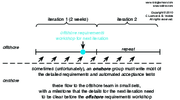 Figure 13.12: Iterative Requirements Onshore to Offshore
Figure 13.12: Iterative Requirements Onshore to Offshore
Chapter 14
 Figure 14.2: System Dynamics of Degree of Contract Flexibility and Early Lawyer Collactoration
Figure 14.2: System Dynamics of Degree of Contract Flexibility and Early Lawyer Collactoration
Chapter 15
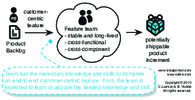 Figure 15.1: Feature Team
Figure 15.1: Feature Team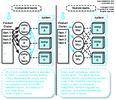 Figure 15.2: Feature vs. Component Teams
Figure 15.2: Feature vs. Component Teams Figure 15.3: Some Drawbacks of Component Teams
Figure 15.3: Some Drawbacks of Component Teams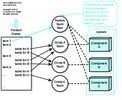 Figure 15.4: Gradual Transition from Component to Feature Teams
Figure 15.4: Gradual Transition from Component to Feature Teams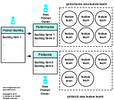 Figure 15.5: Requirement Areas
Figure 15.5: Requirement Areas
Book images from Scaling Lean and Agile Development
The following images are from Scaling Lean and Agile Development - Craig Larman, Bas Vodde:
Chapter 2
 Variables in a Causal Loop Diagram
Variables in a Causal Loop Diagram Effects in a Causal Loop Diagram
Effects in a Causal Loop Diagram Unknown Effect in a Causal Loop Diagram
Unknown Effect in a Causal Loop Diagram Opposite Effect in a Causal Loop Diagram
Opposite Effect in a Causal Loop Diagram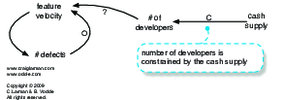 Constraints in a Causal Loop Diagram
Constraints in a Causal Loop Diagram Goals in a Causal Loop Diagram
Goals in a Causal Loop Diagram Measurement Dysfunction Causal Loop
Measurement Dysfunction Causal Loop Measurement Dysfunction with Go See Causal Loop
Measurement Dysfunction with Go See Causal Loop Quick-Fix Causal Loop Diagram: Hire More Developers
Quick-Fix Causal Loop Diagram: Hire More Developers Quick-Fix Causal Loop Diagram: Hire Cheap Developers
Quick-Fix Causal Loop Diagram: Hire Cheap Developers Extreme Effect Causal Loop Diagram: Cheap Low-Skilled Developers
Extreme Effect Causal Loop Diagram: Cheap Low-Skilled Developers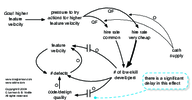 Delay in a Causal Loop Diagram: Low-Skilled and Code Quality
Delay in a Causal Loop Diagram: Low-Skilled and Code Quality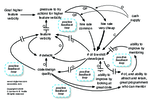 Positive Feedback Loops: Quality of Developers Relationship to Quality of Code
Positive Feedback Loops: Quality of Developers Relationship to Quality of Code Mental Model in Causal Loop: Developers Make Us Go Faster
Mental Model in Causal Loop: Developers Make Us Go Faster 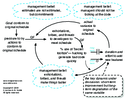 Figure 2.2: Developers Secret Toolsbox Causal Loop
Figure 2.2: Developers Secret Toolsbox Causal Loop Figure 2.3: Developers Secret Toolbox and Bug Fixing Delay Causal Loop
Figure 2.3: Developers Secret Toolbox and Bug Fixing Delay Causal Loop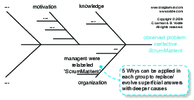 Figure 2.6: Ishikawa Diagram
Figure 2.6: Ishikawa Diagram
Chapter 3
 Figure 3.1: Lean Thinking House
Figure 3.1: Lean Thinking House Small Lean Thinking House
Small Lean Thinking House Figure 3.2: Respect For People
Figure 3.2: Respect For People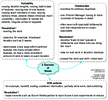 Figure 3.6: Three Sources of Waste
Figure 3.6: Three Sources of Waste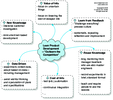 Figure 3.8: How to Outlearn The Competition
Figure 3.8: How to Outlearn The Competition Figure 3.9: Lean Product Development Practices
Figure 3.9: Lean Product Development Practices
Chapter 4
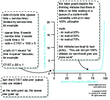 Figure 4.1: Thinking Mistake Regarding Queues in Systems with Variability
Figure 4.1: Thinking Mistake Regarding Queues in Systems with Variability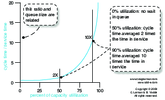 Figure 4.2: Basic M/M/1/inf Queue
Figure 4.2: Basic M/M/1/inf Queue Figure 4.3: M[X]/M/1/inf Queue More Common in Product Development with Variable Batches
Figure 4.3: M[X]/M/1/inf Queue More Common in Product Development with Variable Batches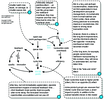 Figure 4.5: Benefits of Reducing Batch and Cycle Size
Figure 4.5: Benefits of Reducing Batch and Cycle Size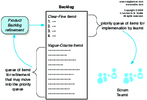 Figure 4.6: Product Backlog Contains Several Queues
Figure 4.6: Product Backlog Contains Several Queues
Chapter 5
 Figure 5.1: Cockburn Scale
Figure 5.1: Cockburn Scale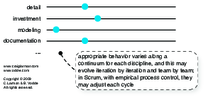 Continuum of Practices
Continuum of Practices
Chapter 7
 Figure 7.1: What is a Feature Team
Figure 7.1: What is a Feature Team Figure 7.3: Component Teams Leads to Waterfall Development
Figure 7.3: Component Teams Leads to Waterfall Development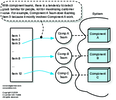 Figure 7.4: Component Teams Leads to Less Valuable Features Being Developed
Figure 7.4: Component Teams Leads to Less Valuable Features Being Developed Figure 7.5: Component Teams Leads to Ever-growing Development Groups Causal Loop Diagram
Figure 7.5: Component Teams Leads to Ever-growing Development Groups Causal Loop Diagram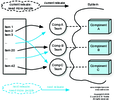 Figure 7.6: Component Teams Leads to Ever-growing Development Groups Picture
Figure 7.6: Component Teams Leads to Ever-growing Development Groups Picture Figure 7.7: Component Teams Leads to Challenges in Planning and Coordination
Figure 7.7: Component Teams Leads to Challenges in Planning and Coordination Figure 7.8: Feature Teams Switch the Coordination Problem to Code
Figure 7.8: Feature Teams Switch the Coordination Problem to Code Figure 7.9: Feature Teams Still Have Specialization
Figure 7.9: Feature Teams Still Have Specialization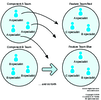 Figure 7.11: Transitioning to Feature Team by Reorganizing
Figure 7.11: Transitioning to Feature Team by Reorganizing
Chapter 8
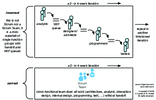 Figure 8.1: Cross-Functional Teams. Not Single Function Groups
Figure 8.1: Cross-Functional Teams. Not Single Function Groups Figure 8.2: Team Performance Increases over Time
Figure 8.2: Team Performance Increases over Time Figure 8.3: Large-scale Scrum Teams
Figure 8.3: Large-scale Scrum Teams Figure 8.4: Mismatch Between Skills Needed for a Backlog Item and Skills in the Team
Figure 8.4: Mismatch Between Skills Needed for a Backlog Item and Skills in the Team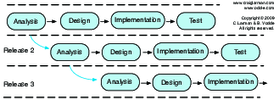 Figure 8.5. Not Recommended: Parallel Releases
Figure 8.5. Not Recommended: Parallel Releases Figure 8.6: Parallel Releases Lead to Staircase Branching and Leads to a lot of Waste
Figure 8.6: Parallel Releases Lead to Staircase Branching and Leads to a lot of Waste Figure 8.7: Recommended: Mainline Development
Figure 8.7: Recommended: Mainline Development
Chapter 9
 Figure 9.1: Requirement Area Grouping in the Product Backlog
Figure 9.1: Requirement Area Grouping in the Product Backlog Figure 9.2: Views on the Product Backlog are Created called Area Backlogs
Figure 9.2: Views on the Product Backlog are Created called Area Backlogs Figure 9.3: Every Area has an Area Product Owners
Figure 9.3: Every Area has an Area Product Owners Figure 9.4: Feature Teams Work inside One Area Teams
Figure 9.4: Feature Teams Work inside One Area Teams
Chapter 10
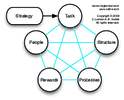 Figure 10.1: Galbraiths Star Model for Organizational Design
Figure 10.1: Galbraiths Star Model for Organizational Design Figure 10.2: Continuous Product Development (without projects)
Figure 10.2: Continuous Product Development (without projects)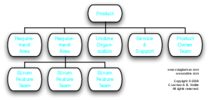 Figure 10.3: Example Organizational Chart for an Feature Team/Requirement Area Organization
Figure 10.3: Example Organizational Chart for an Feature Team/Requirement Area Organization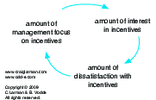 Figure 10.4: Focus of Incentives Increases Dissatisfaction Causal Loop Diagram
Figure 10.4: Focus of Incentives Increases Dissatisfaction Causal Loop Diagram Figure 10.5: Joel Spolskys Business Plan
Figure 10.5: Joel Spolskys Business Plan
Chapter 11
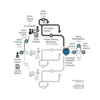 Figure 11.1: Large Scale Scrum Framework 1 for up to Ten Teams (LeSS)
Figure 11.1: Large Scale Scrum Framework 1 for up to Ten Teams (LeSS) Figure 11.2: Large Scale Scrum Framework 2 for More Than Ten Teams (LeSS Huge)
Figure 11.2: Large Scale Scrum Framework 2 for More Than Ten Teams (LeSS Huge)
Unpublished
 Unpublished - Scrum with one team
Unpublished - Scrum with one team
